When I speak to Giovanni Leonardo Bassan on Zoom in late March, he tells me that our chat couldn’t have come at a more perfect time. The multidisciplinary artist, who lives and works in Paris, is in the process of preparing for three exhibitions in Switzerland, Paris and South Korea, opening between May and June this year. While the first of these, at the new Serene Gallery in Lugano, will focus on painting, the latter two will see Bassan share new sculptural works – a medium that the artist has turned to in recent years.
Bassan, who grew up in Northern Italy, first found his vocation through painting. It’s the medium that, he says, feels most familiar – shaped by an exposure to a rich history of Renaissance art in Italy’s many churches. “As a child, I remember feeling a moment of ecstasy in front of [these] huge paintings,” Bassan recalls, taken aback by the sheer beauty and technical skill of his artistic forebears. The influence of classical figurative informed Bassan’s early work – particularly in the mixed media pieces shown at Martyrdom, his first solo exhibition held at The Mine in Dubai in December 2015, where contemporary figures were staged with a classically-tuned intricacy.
In recent years, Bassan’s focus has shifted. He describes the Renaissance-inspired inflections of his early work as the result of his entry into a history of art that, for him, increasingly centres around the contemporary art world – not just the art itself, but the people and community that Bassan has discovered there, too. The artist cites 2019 as a turning point for his art practice. It was a year in which he exhibited a body of work as part of Deluge, a solo show at The Mine in Paris, that would foreground Bassan’s figurative scenes in a modern, rather than classical, context. For one, the artist’s tightly rendered figures in earlier exhibitions, like Martyrdom, made way for a looser style which Bassan describes as a process of painting and layering to create something more abstract.
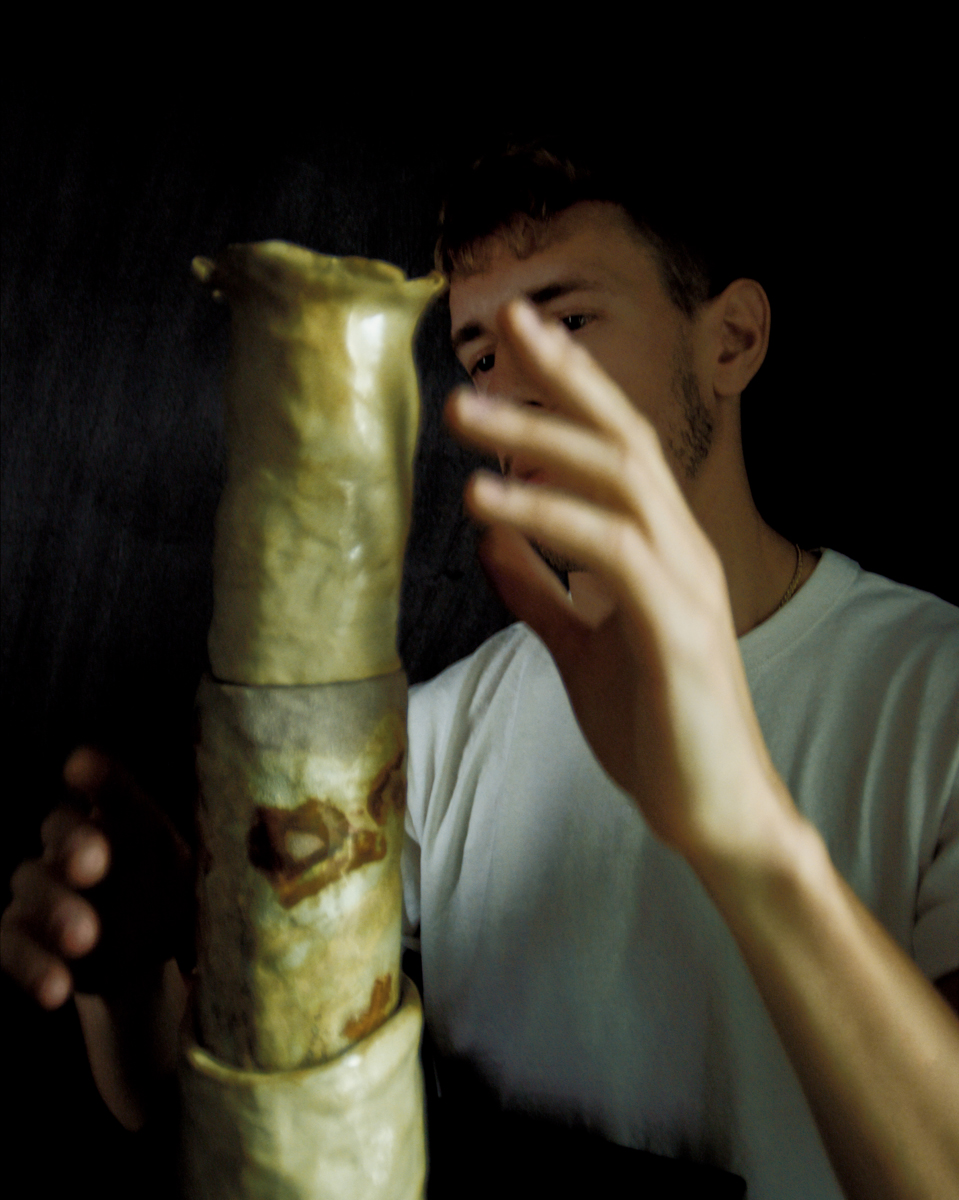
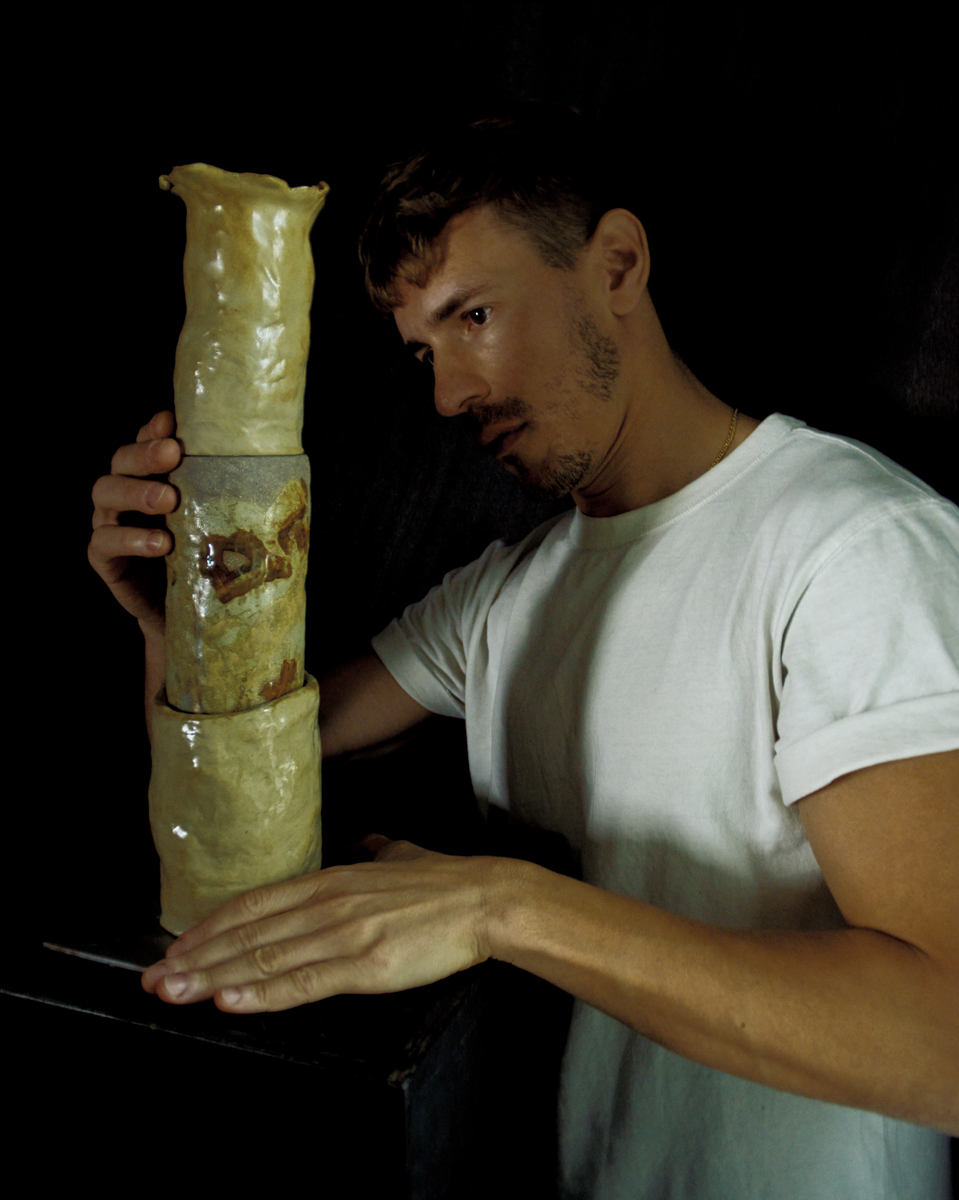
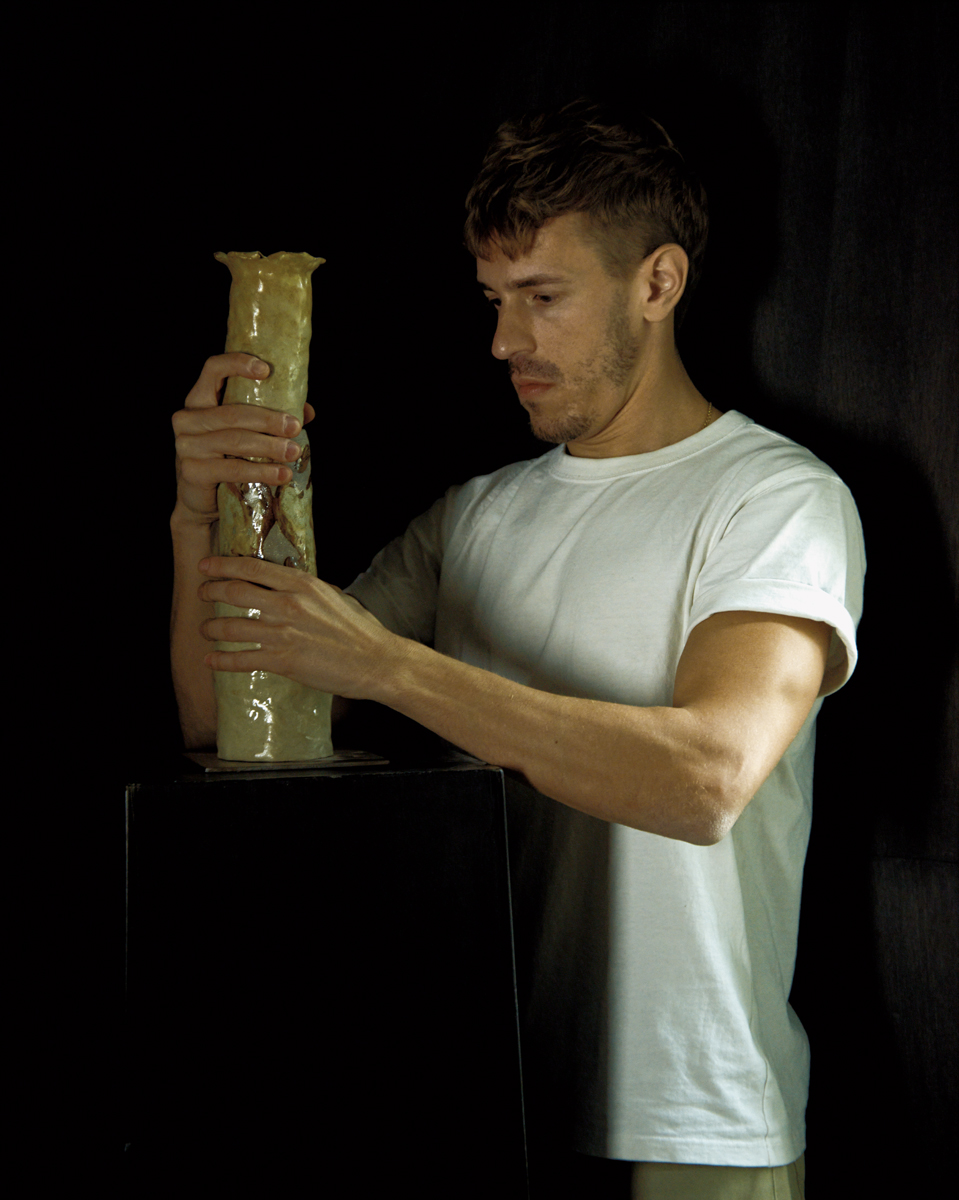
The works from this period are reminiscent of early twentieth century modernism, in which abstract, expressionistic brushstrokes provided a way to capture the speed and bustle of life at the heart of modern cities like Paris. Fittingly, then, Deluge focussed on the artist’s experience of Parisian nightlife, in which he captures a sense of the joie-de-vivre that embodies the scene Bassan has found himself immersed in since moving to the French capital over a decade. The layering of these works, in which characters are depicted with a collage-like quality, leave the impression that the artist has drawn upon memory after memory of nights out to a create something with the effect of a dizzying time-space compression.
The show also marked a shift for Bassan, who since 2020 has turned to making more introspective work. Though the artist attributes elements of this transition to the pandemic – painting his partner whilst at home in the first COVID lockdown – it had also been a long time coming. Hearing people speak about how Bassan’s paintings made them feel also contributed what he describes as subconsciously leaning into creating more personal work. That shift hasn’t been without it’s difficulties, primarily because, he says, “you’re opening up to criticism from the world, while [introducing] intimate discussions.”
But confronting new challenges isn’t something that Bassan shies away from. It was also in 2020 that the artist began working with ceramics. “I always like to push myself in different mediums,” he says, and moving into the realm of ceramics opened up a new world of possibilities, “almost like a Pandora’s Box.” While painting and drawing continues to act as sort of a personal journal for Bassan – a way to document the things, people and places that inspire him – this venture into ceramics has allowed the artist to explore “another side of myself, which is very physical.”
While working with ceramics has allowed the artist to move into an increasingly abstract realm, working in three dimensions is not entirely unfamiliar terrain for Bassan. Since 2018, he has also held the esteemed position as Head of Furniture at Rick Owens, the eponymous fashion and design house of the American designer, where Bassan has now worked for over a decade. He describes his work for Owens as, essentially, artistic – these are furniture objects that are less practical and ergonomic, more sculptural objects in themselves: “they sell as art pieces, they show in art museums.”
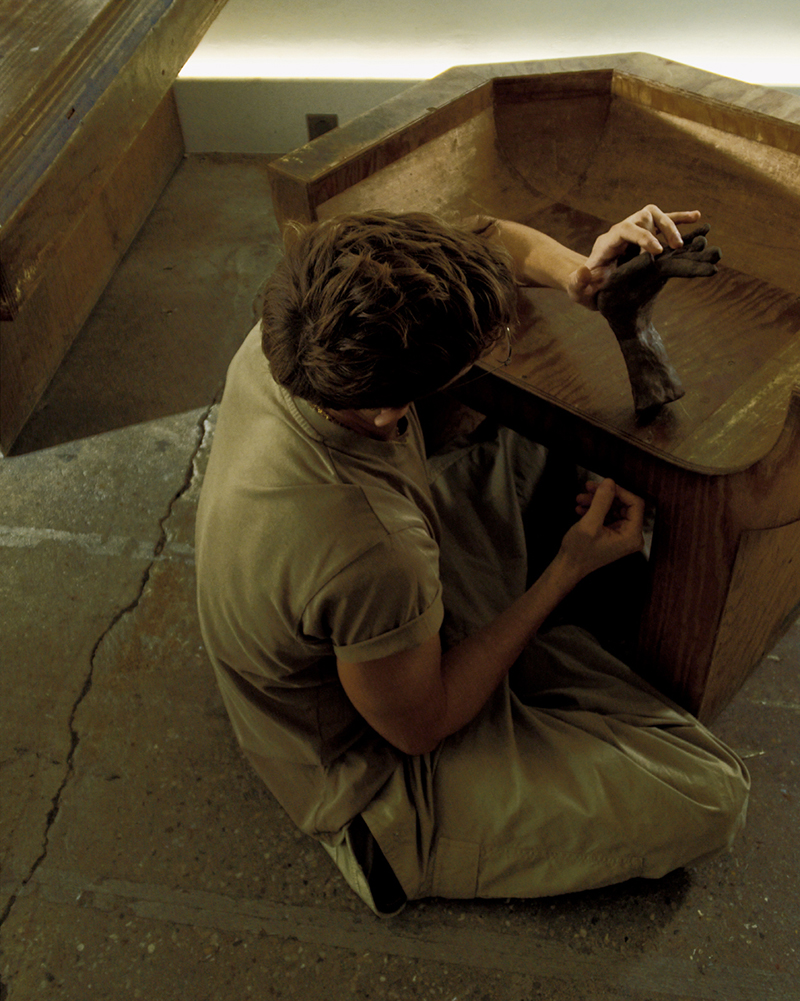
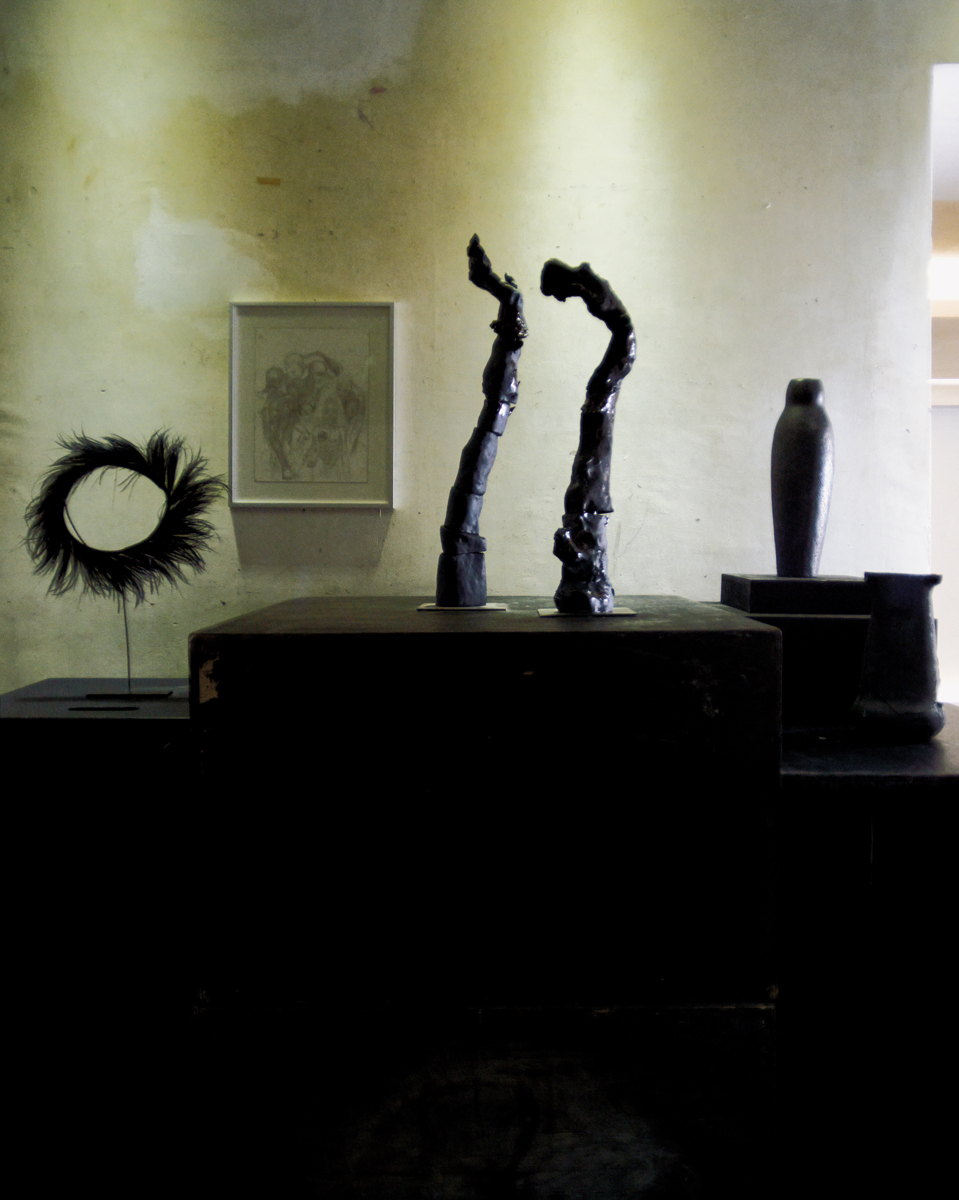
Working with Rick Owens, then, is an experience that nurtures Bassan’s own artistic endeavours. Not to mention that it was in his early days of working for the designer that he met Rick Owens’s creative partner, wife and muse, Michele Lamy, who offered up her basement to the artist as a studio space to work from in the evenings, after his day job.
Bassan refers to Lamy as a “mentor, dear friend and second mother” – though it’s also through his own mother that the artist discovered a passion for furniture. He describes furniture and architecture as being baked into his DNA; through his mother’s side, Bassan’s family have been furniture makers for five generations. “I always loved building stuff with my hands and getting my hands dirty, but I never really [experimented with it] in my art.” His move into ceramics and sculptural pieces has allowed Bassan to “explore this passion for using my hands.”
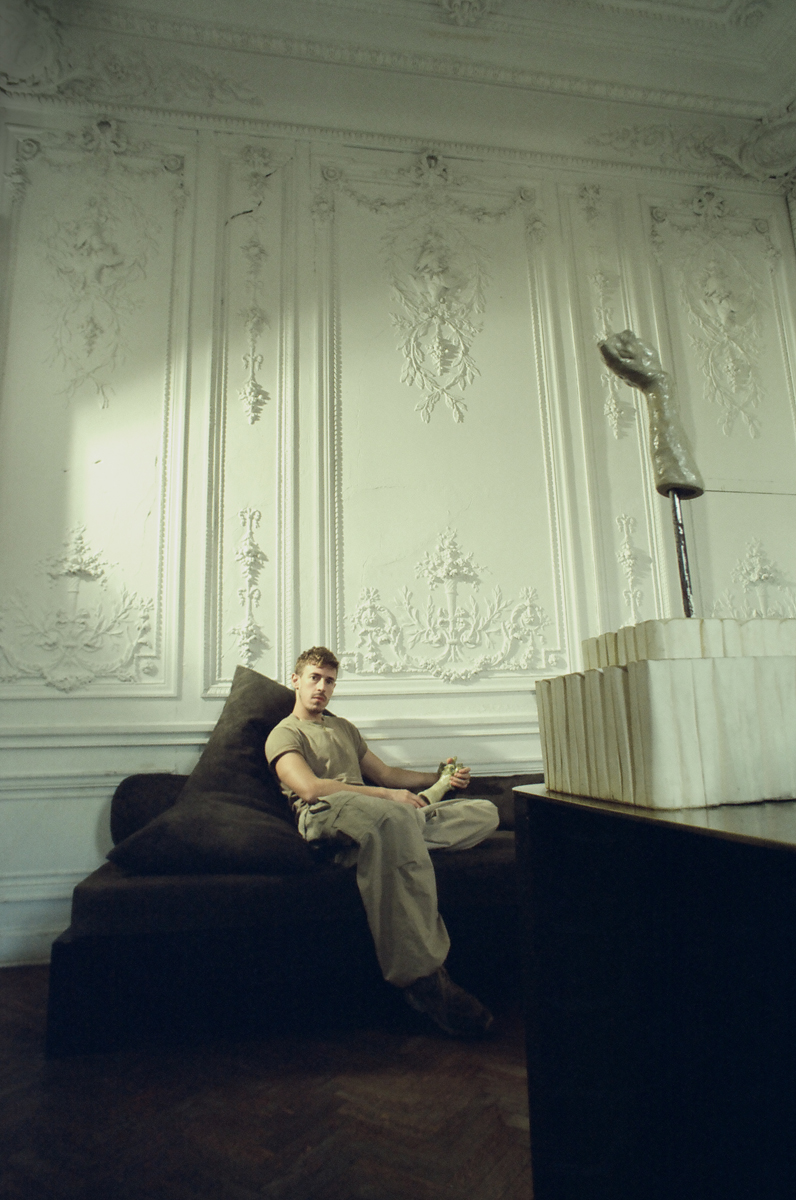
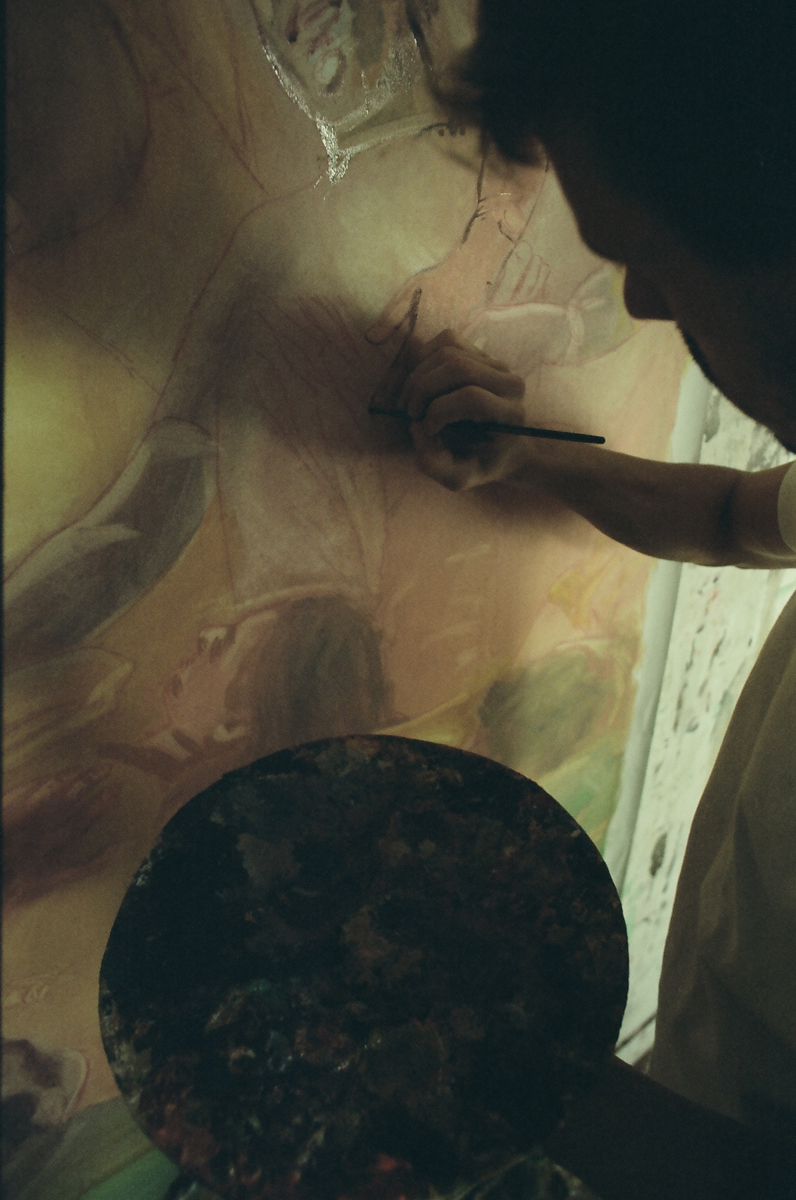
But it’s not just a flair for design that Bassan has inherited. Since 2018, he has run an artisanal wine company with his brother, Franceso Vittorio. It’s an business endeavour that stems from the fact that his father comes from a line of wine distributors that goes back generations. As a family affair (with Lamy as a mentor), Katkoot melds Giovanni’s artistic precision with Francesco’s expertise as a sommelier.
While their offering, which has so far included a rosé, prosecco and Amarone, reflects a focus on traditional, small-scale winemaking, Bassan also describes Katkoot as an “artistic wine.” Less concerned are the Bassan brothers with getting their wine stocked on shelf after shelf of stores across the globe than with using it as an opportunity to re-imagine how the wine bottle can be conceived as an art or design object in its own right. That means, then, that Katkoot bottles have a detachable, handmade copper base that can be reused after consumption.
When it comes to the series of exhibitions this summer that Bassan is gearing up for, the artist is excited to use each show as an opportunity to tread new ground. As part of a DAZED Korea group show in Seoul, for example, the artist will exhibit a sculptural piece “in conversation with a flat work” – something he hasn’t yet done.
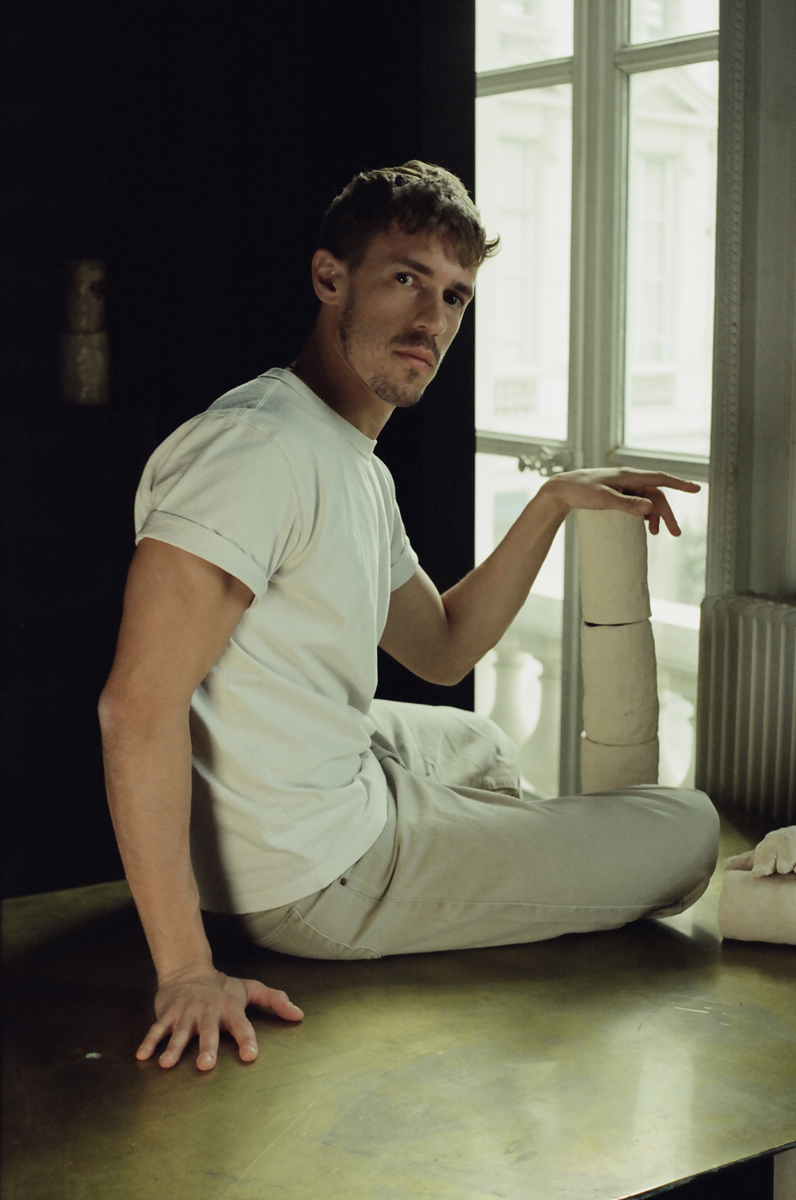
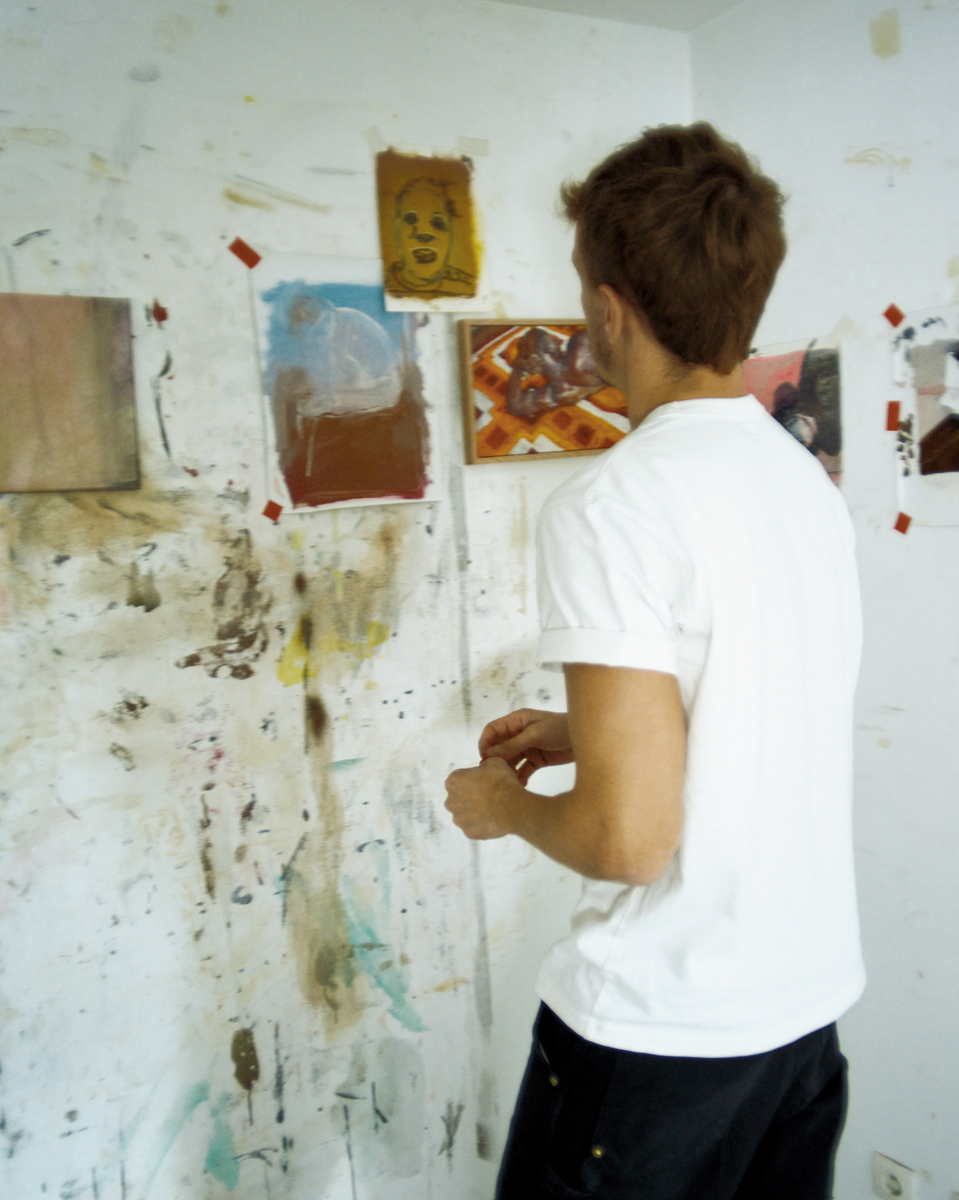
For the other two exhibitions, the focus and format of the work will differ again. Bassan will be the first artist to exhibit at the new Serene Gallery in Lugano for his solo show, Metonymia. The artist describes this body of work as intimate and drawn from a series of depictions of people close to Bassan who he is inspired by. This sense of intimacy is reinforced by the fact that the paintings on show are all miniatures (a change from Bassan’s usual approach of working messily, quickly and “almost aggressively” on a large scale). “Working on a tiny scale is interesting,” he says “because it forces the viewer to approach the canvas, to come close to it.”
By imposing a close proximity between the painting and viewer, the exhibition will encourage viewers to consider what it means to forge connections with others. Metonymia will also see Bassan exhibit a body of work that is much more intimate that Deluge. This new work hones in on smaller, individual details of a wider community: “metonymy” is defined by the Cambridge Dictionary as “the act of referring to something using a word that describes one of its qualities or features.”
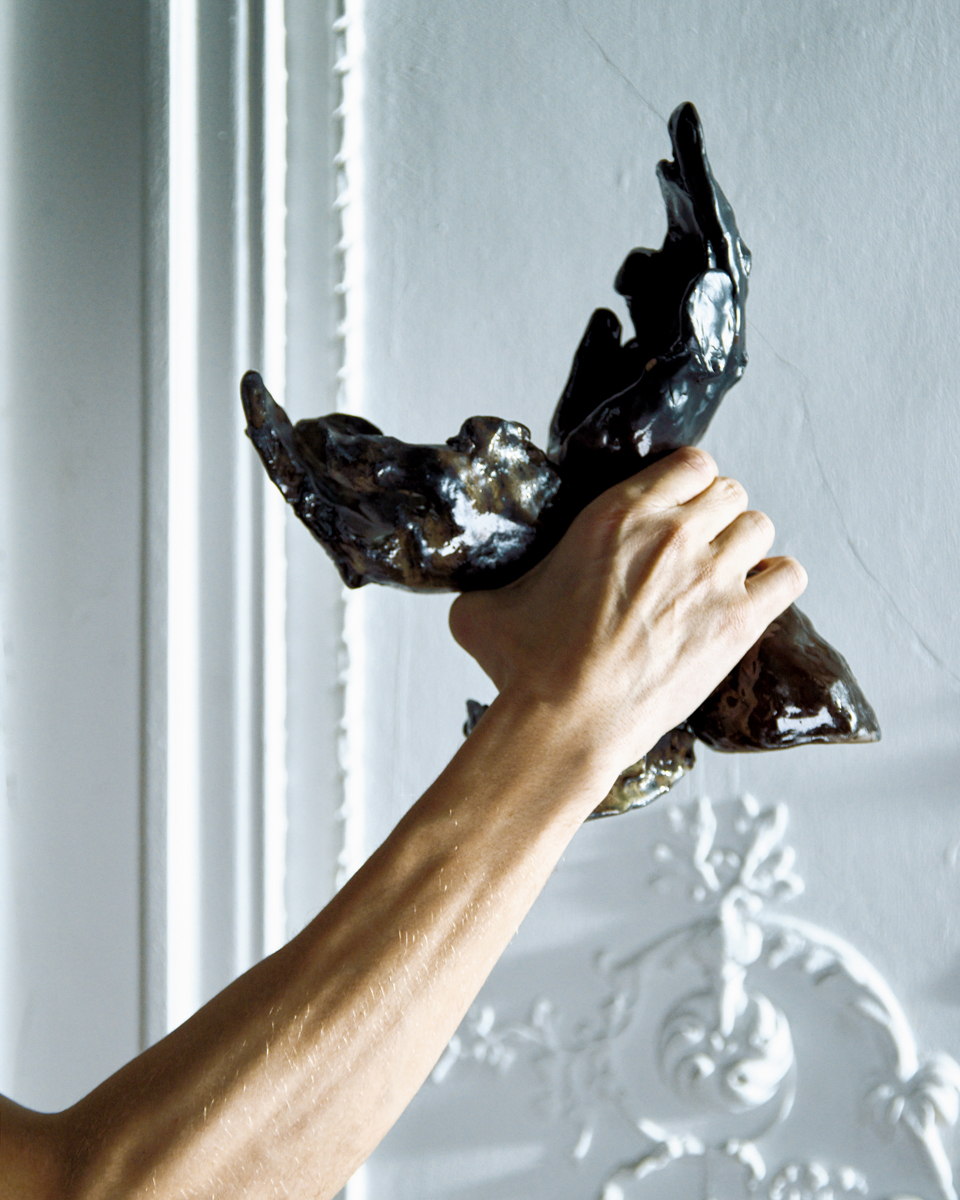
The intention, Bassan explains, is to use intimacy as a way to introduce a more vulnerable side of the artist, “and this [is] a sensitive subject as a queer gay man,” he adds, but celebrating inclusivity and representation is key. Thus, the intimacy of Metonymia is part of the artist’s hopes to encourage difficult conversations – about sexual orientation, race, personal circumstances – through an honest depiction of his surroundings. In that sense, then, though Bassan is in the midst of preparing for three exhibitions, the work won’t be finished until he’s able to hear what viewers and his peers have to say. “The moment when the public is looking at the art and interacting with it, that is the final process of creation.”
There’s little doubt that Bassan is interested in discussing what his work means to others – throughout our chat, he is warm and amiable and, in his own words, “comfortable to challenge myself in different conversations”. This, perhaps, stems from what he says was a struggle to find people with shared interests growing up “in a tiny village in the mountains of Italy.” Having since found his people – littered, as they are, not just in Paris, but across the world – Bassan espouses the benefits that a sense of belonging brings.
Fittingly, then, the third exhibition that the artist is preparing for at the time our call is DAWA, a group show curated by Latif Samassi this June. Held at 3537 (or “trente-cinq trente-sept”, named after its location on 35-37 Rue des Francs Bourgeois in Paris), it will be the final exhibition held at the temporary pop up space that was launched by Dover Street Market in 2021. After the exhibition’s close, the space will be transformed into DSM’s latest retail outpost.
It’s not the first time that Bassan will have exhibited at 3537, having collaborated with Commes des Garçons (the fashion house behind DSM) in 2021 as part of an annual exhibition in which a different artist is invited to respond to and re-interpret their fragrance collection. Though this final group show will undoubtedly be a poignant one, Bassan is looking forward to exhibiting two ceramic works there. “It’s a space that means a lot for the community and having just one piece there next to a lot of other artists who are also friends of mine, it’s going to be powerful.”
